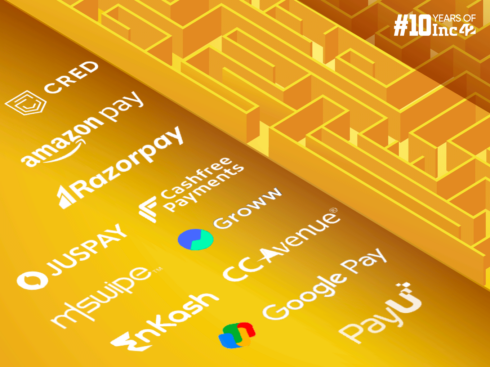SUMMARY
BharatPe has a 49% stake in Unity SFB versus CFSL’s 51% stake, and there is a clear transition to banking from just being a product-focussed fintech.
BharatPe has always been a product-oriented company, and the pace at which it was able to grow in the first place is bound to change now, said a former CXO at BharatPe
Despite securing a banking licence, there are a lot of challenges that need to be tackled, including keeping Unity SFB’s Capital-to-Risk (Weighted) Assets Ratio (CRAR) and its mounting losses in check
The executives of BharatPe, former or current, are often seen taking pride in building India’s first fintech company to have acquired a banking licence. However, the truth of the matter is that the company was earlier rejected by the Reserve Bank of India (RBI) when it had applied for an NBFC licence, let alone a core banking licence.
But, as luck would have it, Centrum Financial Services Limited (CFSL) signed a joint venture deal with BharatPe to launch Unity Small Finance Bank (Unity SFB), after winning an in-principle approval to set up an SFB on June 18, 2021. This also paved the way for the new entity to take over the cash-strapped PMC Bank.
Today, BharatPe has a 49% stake in Unity SFB versus CFSL’s 51% stake, and there is a clear transition to banking from just being a product-focused fintech.
Founded in 2018, BharatPe claims to serve over 10 Mn merchants across the country. Further, it is backed by marquee investors such as Tiger Global, Dragoneer Investment Group, Steadfast Capital, Coatue Management, Ribbit Capital, Insight Partners, Steadview Capital, Beenext, Amplo, and Sequoia Capital. But with Unity SFB in the picture, while BharatPe’s size has grown even more, it has also come at a cost.
“The bank, which will be a digital-first bank, has a capital infusion of about INR 1,100 Cr, total assets worth INR 2,400 Cr, an active customer base of over 2 lakh, 145 offices, including a branch in Centrum House, Mumbai,” Centrum Group and BharatPe said in a joint statement when Unity SFB commenced operations in November 2021. With the PMC Bank merger, Unity SFB (and its major stakeholders, of course) got a network of about 100 branches in Mumbai, Maharashtra and a few other states.
But barring a few positives, the fact that BharatPe’s tensions have only increased after entering the core banking sector cannot be ignored. Now, let’s understand what has changed for the fintech giant so far.
BharatPe’s Good Old Days
What made BharatPe an instant hit after its launch in 2018 was the elimination of the 2% transaction fee that other apps such as Paytm and PhonePe were charging from their network of Indian merchants.
In his book, Doglapan, Ashneer Grover writes, “Our proposition that we wouldn’t charge the merchant any fee and would settle payments in real time was a big plus, as merchants in those days were used to dealing with Paytm and PhonePe that not only deducted a 2% fee on every transaction but also settled their accounts on a T+2 basis, i.e. two full days after the transaction was done.”
After disrupting the market, BharatPe launched multiple new products, including BharatSwipe PoS machine; PostPe, a 10 lakh creditline to merchants; 12% Club, a P2P lending platform; and BharatTrade, an investment platform for merchants.
“Unlike other fintech companies, BharatPe’s USP has been cost-effective solutions and real-time transactions. For instance, no banks would offer 12% interest on lending, but we did. With the entire record of merchants’ daily transactions, BharatPe used the cash flow discounting method to extend loans to merchants. Also, the credit lines that we offered could be availed instantly,” said a former CXO of BharatPe.
He added that some fintech platforms like Pine Labs had similar products, but BharatPe took a lead over its competitors by launching products more frequently.
“While banks and other financial institutions took years in launching a product, BharatPe has been launching a slew of products every few months. This is why despite being a late entrant in fintech, BharatPe was able to outdo its competitors in a span of just three years,” the erstwhile CXO said.
Techies Pale Into Insignificance
Speaking about the structural changes at the company, the former CXO said that BharatPe has always been a product-oriented company. It needs techies and developers to lead from the front, and bankers only to assist in meeting regulatory requirements. Right now, it is the other way around.
“BharatPe does not need experience but developers and innovators. This is why we were able to launch so many products in so little time. But now, the pace at which BharatPe was able to launch so many products is bound to change, and the key reason behind this is the latest reshuffle at the board and in the management team,” he pointed out, adding that a lot has changed at BharatPe in the last one year, especially after Grover’s exit.
Hinting at the exits of Bhavik Koladiya, who has been at the core of product developments, and the tech minds such as CTO Vijay Aggarwal, CPO for lending and consumer products Rajat Jain, and head of consumer lending platform PostPe Nehul Malhotra, the former executive of BharatPe said that now the people are being hired to suit the investors’ requirement more than what the company requires.
He also pointed out that after accepting Suhail Sameer’s resignation as key managerial personnel (KMP) and the CEO, the board immediately appointed another ex-SBI official, Nalin Negi, as a KMP. Negi is currently acting as an interim CEO at BharatPe. He joined the company in August 2021 as its CFO.
“There has been a clear shift at the board and in the management team composition — from techies to ex-bankers. After Kewal Handa, the former chairman of Union Bank of India, resigned from the board, former RBI deputy governor and ex-SBI chairman Rajnish Kumar joined. Sooner or later, Negi, too, is expected to join the board. With more bankers at the helm, clearly the focus will be more on Unity,” the ex-CXO predicted.
BharatPe’s Unity Woes
The existing RBI guidelines do not allow fintechs to scale and bring more variations to their products without a licence. In his book, Grover explained that without a banking licence, the restrictions such as not being able to offer credit cards or any kind of credit line limit the fintech capabilities.
Sumir Verma, cofounder and MD of Merisis Advisors explained, “With RBI strict on lending practices and norms including First Loan Default Guarantee (FLDG), it is inevitable for any lending entity to at least grow into an NBFC to scale. We have seen the RBI reluctant to give out NBFC licenses to some companies in the past months due to concerns like ownership of the fintech company, source of capital flowing into the fintech company, etc.”
Such players have a tech first approach and can accelerate lending and credit facilities via digitization. Hence, these companies are leaving no stone unturned to make a formal representation to the RBI through a joint body, scaling up their infrastructure, pursuing inorganic growth strategies, etc to bring more trust and break legacy issues, he added.
Precisely, the reason why BharatPe first applied for an NBFC licence, and after failing joined hands with CFSL for a small finance bank licence and bid for PMC.
However, despite securing a banking licence, there are a lot of challenges that need to be tackled, including keeping Unity SFB’s Capital-to-Risk (Weighted) Assets Ratio (CRAR) in check. According to the Investment Information and Credit Rating Agency of India (ICRA), as on March 31, 2022, Unity SFB had a total CRAR of 63.71% against the regulatory requirement of 15%. However, it is noted that the capital adequacy is supported by the relaxations provided by the RBI in terms of the inclusion of certain restructured and fair-valued liabilities in the total CRAR
Further, Unity aims to cater to the existing CFSL and CML portfolios, while simultaneously managing the stressed PMC Bank’s portfolio. This could pose a challenge for the small finance bank in maintaining its overall asset quality.
Also, the accounting treatment of the fair valuation impact of the assets and liabilities of the erstwhile PMC Bank would have further bearing on its profitability. Unity SFB reported a net loss of INR 99 Cr in H1 FY2023. It reported a net loss of INR 150 Cr from November 1, 2021 to March 31, 2022.
ICRA observes that Unity bank will continue to report loss over the medium term, given the high operating expenses typical in the early stages, costs on account of the merger with PMC Bank, and incremental credit costs if required.
As of now, mounting losses at BharatPe, including Unity, have further raised doubts over BharatPe‘s revenue model, which the likes of Pine Labs founders have been questioning for supporting zero MDR.
Despite BharatPe’s revenue from operations doubling to nearly INR 300 Cr in the financial year 2021-22 (FY22), the startup’s loss more than tripled to around INR 5,000 Cr from INR 1,619 Cr in FY21.
Further, even though the company has a full runway to its credit, its IPO plans are expected to be deferred if the current situation continues to persist.
Update | January 18, 2023: 15.09
The headline of the story as well as ICRA observation on Unity’s CRAR has been updated for more clarity.































 Ad-lite browsing experience
Ad-lite browsing experience